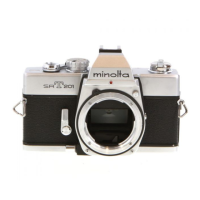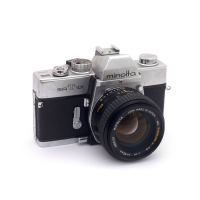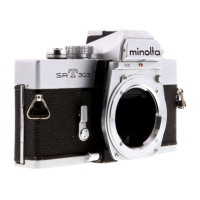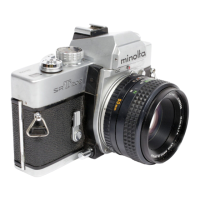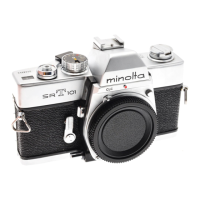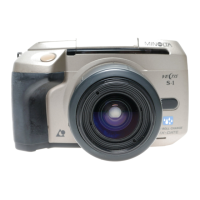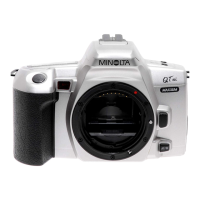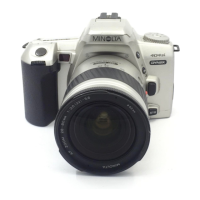EXPOSURE-CONTROL FUNDAMENTALS
The two camera exposure-control settings
are lens opening (aperture) and shutter speed.
The size of the aperture determines the amount
or volume of light reaching the film from a
given subject and lighting. The shutter speed
determines the length of time this light acts
upon the film. Apertures are expressed in
f-numbers, which are larger for small openings
and vice versa (e.g., f/16 represents a small
opening, f/2 a large one). Shutter speeds are
expressed in seconds or fractions thereof, which
are generally the reciprocals of the numbers
shown on shutter-speed scales (e.g., 60 = 1 /60
sec., but 1 = 1 full second) At usual apertures,
each f-number setting (e.g., f/8) lets in twice as
much light as the next numerically larger one
(f/11) and half as much as the next smaller
(f/5.6). • Similarly, each shutter speed (e.g.,
1/60 sec.) allows light to strike the film twice as
* In practice, this varies somewhat at large or
maximum apertures, but your SR-T and
Minolta MC lenses have built-in compensation
for this to give you most satisfactory expo-
sure.
long as the next higher speed (1i125) and half
as long as the next lower one ( 1 /30). The
interval between two standard f-numbers (say,
f/4 and f/5.6) or shutter speeds (say, 1 /15 and
1/30) is one "stop." Total exposure on the film
is determined by the combination of aperture
and speed. Other things being equal, using the
next smaller f-number (i.e., giving one stop
more exposure) will balance using the next
higher shutter speed (i.e., giving one stop less
exposure), and so on. A great range of combina-
tions (e.g., f/5.6 at 1/30, f/4 at 1/60, f/2.8 at
1/125, f/2 at 1/250, etc.) will thus yield the
same total exposure. The specific combination
you choose under given lighting conditions will
depend upon the degree to which you want the
greater depth of field (see p. 31) of smaller
apertures and the greater movement-blur pre-
venting ability of faster speeds. These factors as
they relate to exposure control with your SR-T
are discussed in the following section.
27

